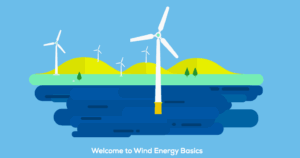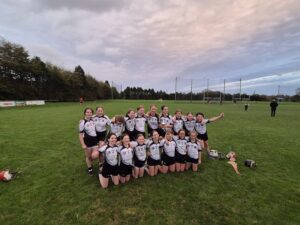Author Archives: Canice K
Wicklow School to Host Major Youth Climate Conference
click here for an article in the Wicklow Times on an Educate Together school hosting a Youth Climate conference
Wind Farms Provided 36% of the Country’s Electricity Last Month
click here for an Irish Independent article on how wind farms provided over a third of the country’s electricity last month
Who Will Lead The World Into A Clean Energy Future?
Click here for an Irish Times article on global climate efforts
Global Climate Efforts Face Mounting Headwinds
Read Kevin O’Sullivan’s Irish Times article here:
There is an elevated level of geopolitical uncertainty, compounded in the business world by the tariff strategy of the US, under Donald Trump 2.0.His overhaul of energy policy, attempting to ratchet up fossil fuel generationand ensure its use is at the heart of the American economy, comes with a vengeance. There are attempts to terminate offshore wind farms (including some already under construction), an ending of plans for battery factories to complement renewables and withdrawal of beneficial subsidies, especially for electric vehicles (EVs). It is undermining global efforts to scale up decarbonisation. Most mega oil and gas companies have scaled back investment in renewables and dropped promises to transition to clean energy, or at least eased timelines.
It is not a reassuring backdrop to the annual UN climate summit, Cop30 in Belém, Brazil, in November. The EU should be stepping up its commitmentto reinforce its “high ambition” status as a leader in global efforts to reach net zero by 2050. The signs of late, however, have not been reassuring. While seeking to pressure EU countries to make a decision on targets for 2035 and 2040,EuropeanCommission president Ursula von derLeyen stressed in late September the need for pragmatism, given divisions between member countries over the goals.
Ireland’s targets are set under the EU umbrella. “How we reach these targets will be different. The world has changed. Global competition is fierce and not always fair. We need more flexibility, more pragmatism, but by staying the course, we provide stability for workers, clarity for businesses, and certainty for investors,” von der Leyen said. Europe would stand by its climate goals, she insisted, while Brussels was cutting red tape to help businesses with the green transition, and was investing in power grids so consumers will feel the benefits of cheaper renewable energy. The sum of its parts risks falling into the trap of rowing back.
EU commissioner for climate, net zero and clean growth, Wopke Hoekstra told the New York Times recently that “theUS, the world’s most phenomenal geopolitical player, its largest economy, its second largest emitter, is basically checking out.” Environmentalist Katharine Hayhoe noted the irony of the US already suffering more insured losses from extreme weather and climate disasters than any other country. These economic costs will continue to escalate, given the predicted rise in such events. But this is not just about avoiding the most dangerous impacts. It’s also about deciding who will lead the world into a clean energy future. China is already stepping up to the plate.The EU needs to match them stride for stride, even if its priority is ensuring it is competitive globally and has energy independence. President Xi Jinping made China’s strongest pledge to date in September. It was reinforced by the declaration, “Green and low carbon transition is the trend of our time.” It was not an idle comment; China has installed more solar in a single year than the US in its entire history.
Large corporations are rowing back on sustainability commitments in light of current turbulence. This prompted the Harvard Business Review to ask: Are companies actually scaling back their climate commitments? “The headlines seem clear: Corporate ESG is retreating. Sustainability is under political fire. Coalitions are dissolving. Climate commitments appear dead,” it noted. Under closer examination, however, a more nuanced picture emerges in its analysis. Although a fraction of companies have pulled back, many more are staying the course, or even doubling down. They’re just doing it quietly. Increasingly, the global community is working together to address immense challenges associated with the climate crisis. Real progress is not only possible, it is already underway, though it is not quick enough. There were more than 600 extreme weather events last year with over 150 being unprecedented, meaning they would not have occurred without human-caused climate change.
Just as we need to be fully aware of the negatives coming down the tracks, however, we should acknowledge the positives including tipping points to speed up the transition. Renewable energy is frequently significantly cheaper than fossil fuels, with over 90 per cent of new renewable projects now costing less than new fossil fuel alternatives, largely due to rapid price declines in solar and wind technologies. Solar is increasing exponentially across much of the planet. EVs may have already “tipped” in European and Chinese markets, while sales of electric two- and three-wheeler vehicles are shooting up in countries such as India. A recent Boston Consulting Group (BCG) and CO2 AI climate survey found 82 per cent of businesses surveyed have already captured economic benefits from decarbonisation efforts, including cost savings and improved financial performance. These benefits stem from cost reductions via energy efficiency, increased resilience to risks, enhanced market access, and greater innovation and talent attraction. For all, taking this route guarantees less air pollution and ensures the wide availability of clean energy that gets cheaper as those positive tipping points kick in.
Powering The Future: Green Transition
The Top Five Common Myths About Wind Energy
Click here for Wind Energy Ireland’s top five common myths about wind energy.
https://windenergyireland.com/about-wind/the-basics/wind-myths
Watts Up – Podcast
Listen here to a 12-part podcast series WATTS UP produced over the autumn and early winter of 2025 by Renewable Energy Ireland partnered with WLR FM in Waterford.
The series explores aspects of renewable energy with different thematic experts.
https://windenergyireland.com/about-wind/audio/waterford-watts-up
Wind Energy Basics – Facts for Kids with Posters and Infographics
click here for Wind Energy Ireland’s Facts For Kids with Posters and Infographics
https://windenergyireland.com/about-wind/education/facts-for-kids
Do you want to know how electricity works?
Explore how we get the electricity that powers our lives
click here to the Eirgrid website for an informative guide to how electricty works
https://www.eirgrid.ie/grid/how-grid-works/how-does-electricity-work
Mullinavat GAA & Camogie Club
Mullinavat GAA & Camogie Club hosted a festival of hurling and camogie on Saturday 30th and Sunday 31st of August. The event was the largest of its kind in Kilkenny, with over 1200 boys and girls taking part. Pictured are the U12 Pink Group Winners proudly sponsered by Ecopower.


